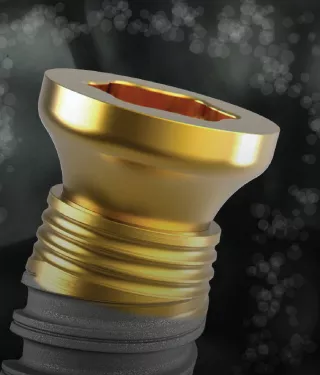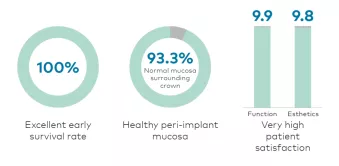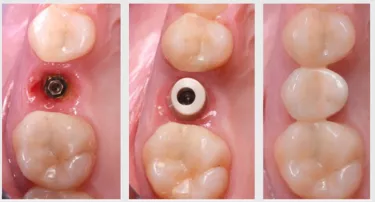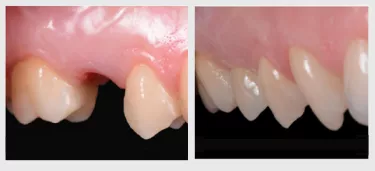
And the results are in! Dr. Giorgio Ban explains preliminary findings of Xeal™ and TiUltra™ surfaces clinical study

At the European Association of Osseointegration’s Digital Days event, Drs. Giorgio Ban and Giacomo Fabbri presented the preliminary results of a prospective clinical study they are currently conducting on the Xeal abutment surface and TiUltra implant surface.
Here, Dr. Ban discusses why he began using Xeal and TiUltra in his practice, and what his study could mean for implant treatment moving forward.
Dr. Ban, could you please tell us a little bit about your professional background?
I graduated in 1991 from the University of Bologna and, since then, have worked as a specialist in oral, implant and periodontal surgery. I’m also a member of the Italian Society of Periodontology, and currently operate a dental practice in Cattolica, Italy, alongside Drs. Roberto Mancini and Giacomo Fabbri.
Could you briefly explain the purpose of your clinical study?
The purpose is to determine the clinical performance, in terms of soft tissue health, of a single tooth implant restoration that uses Nobel Biocare’s Xeal abutment surface and TiUltra implant surface. The study is currently ongoing and though we have already conducted clinical follow-up examinations 6 months after the implants were inserted, we are planning on conducting further follow-up examinations at 12, 24 and 36 months post final prosthetic delivery.
What have the results been like to this point?
Though the study is ongoing, the preliminary results are extremely promising: 93% of the implant sites showed no signs of inflammation around the crown upon inspection, while 85% demonstrated no bleeding when a periodontal probe was passed along the mucosal margin adjacent to the implant.
In addition, the level of patient satisfaction in terms of function and esthetics has been extremely good. On a scale from 0 to 10, patients rated function with a mean score of 9.9, while the appearance had a mean score of 9.8.
Overall, the patients have experienced a significant improvement in oral health-related quality of life from the pretreatment stage through to the delivery of the final prosthesis.

What do these results signify? What can we take away from them?
Based on the results so far, we can see that the surfaces are safe, and promote excellent soft tissue health. For me, it signifies something of a shift in how we approach and measure implant success. While clinicians have previously focused on the osseointegration of the implant, our study represents a growing focus on soft tissue, which needs to be considered due to the role that healthy peri-implant soft tissue plays in protecting the underlying bone.
When did you first begin using Xeal and TiUltra surfaces, and what prompted it?
It was back in 2019, and we have since used them in more than 100 clinical cases. We began using them because they seemed to be aligned with our clinical focus. Our ultimate aim is for patients’ implants to be successful in the long term. Nobel Biocare’s anodized TiUnite surface has a huge amount of long-term data behind it, and I have had excellent clinical outcomes with these implants over the years, so I already had confidence in this particular type of surface technology.
With the introduction of Xeal and TiUltra, it was extremely interesting to see the use of this technology being developed further, especially in tailoring surface chemistry, as well as being designed with a strong focus on soft tissue needs.
How important do you consider implant and abutment surfaces to be for the success of dental implants?
For a long time, most of the consideration regarding implant surfaces and long-term success was given to surface roughness for osseointegration, but now that there’s greater focus on soft tissue integration, I’m quite happy. Protecting soft tissue and ensuring successful dense contact with the abutment is crucial for enabling good long-term outcomes for dental implants. Of course, there are many other factors, patient-related and otherwise, that can influence the long-term success of an implant case, but being able to use a new abutment surface that focuses on the interaction between soft tissue and the abutment, is very promising.

